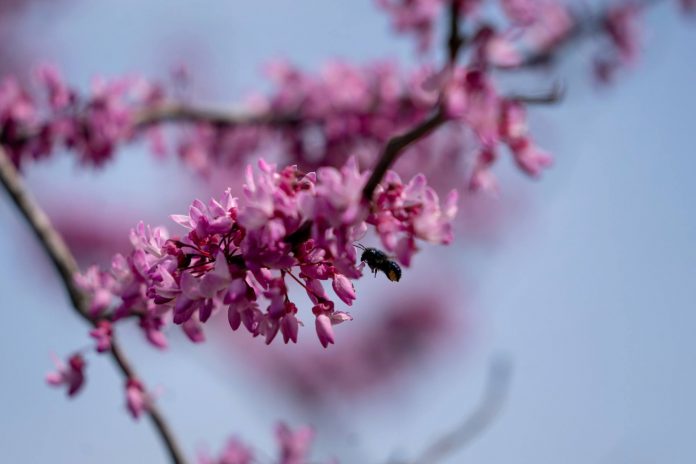Pollinators serve a great purpose in helping pollinate plants and vegetables alike during many months of the year. Although wildflowers returned post-freeze, and many plants are beginning to show life again, most flowering was set back several weeks meaning food sources for pollinators are not available.
Planting a few already-flowering plants or fast-growing seeds in your pollinator garden will help them get through while other plants recover.
Michael Arnold, director of The Gardens at Texas A&M University and professor of landscape horticulture for the College of Agriculture and Life Sciences, said there are steps that can be taken immediately to help pollinators and set them up for year-round support.
Pollinators include butterflies and bees, but also birds, bats, moths and small animals who obtain nectar and pollen from flowers, trees and woody shrubs.
Arnold suggests gardeners plant already-flowering annuals or fast-growing perennials that tend to bloom in the first year to provide immediate relief for pollinators. This will help them get through the early spring as plants recover from the freeze.
“Sweet alyssum and pot marigolds will do well for this cooler weather and grow into most of the spring,” he said. “Borage, if you like herbs, is fantastic for bees.”
A few other plants to consider are catnip, a great choice for bees, and traditional spring plants like larkspur and Mexican hat, which can be a perennial but also may bloom fairly quickly from seed.
“It is the year of the sunflower, and they are a good one to keep in mind because they are very fast growing, and they bloom early,” Arnold said. “So, you could make an impact in just a few weeks in the garden with them.”
If you are looking for something dual purpose, basil is a great herb to consider. Any bee balms can be a good option and are sold as perennials or in wildflower mixes. Salvias and sages will also crossover and pick up some of the butterfly and lepidoptera pollinators. Greg’s blue mist will most likely bloom this spring but will also return even better in years to come.
“Lepidoptera are often attracted to composite flowers like those in the aster family,” he said, “But you could also add some really quick-growing plants like cosmos and the calendula that would be available early in the season for them.”




